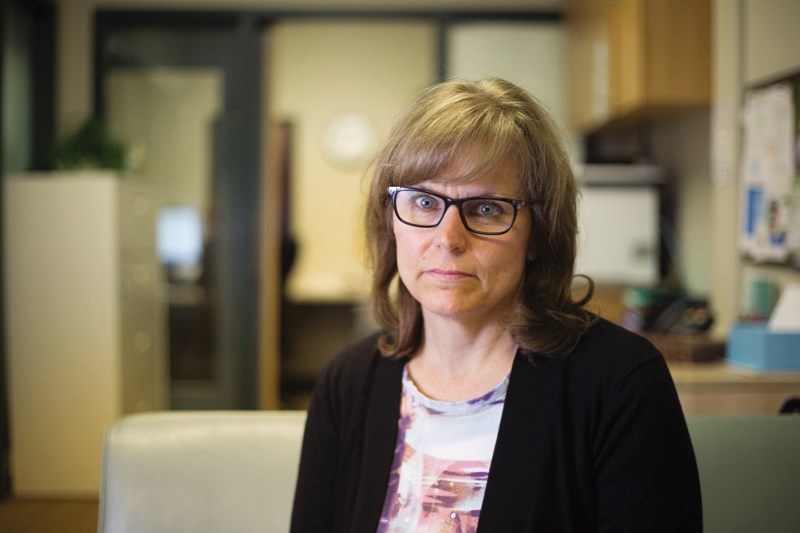A group of organizations is banding together to provide seniors and their families avenues to report and recover from elder abuse.
Spearheaded by the Town of Okotoks last year, a steering committee was struck to create a regional collaborative approach to address elder abuse. The committee has developed a co-ordinated community response model on elder abuse in the Foothills region.
Committee members include Foothills and Community Support Services (FCSS) from Okotoks, High River, MD of Foothills, Black Diamond, and Turner Valley, as well as Foothills Victim Services, Westwinds Communities, RCMP, Calgary Rural Primary Care Network, Alberta Health Services and the Rowan House Society.
Julie Leggett, elder abuse co-ordinated community response facilitator for the Town of Okotoks, presented to MD council on April 4. She said it’s important to bring multiple sectors together to address the issue.
“Elder abuse is a complex health and social issue that crosses economic, cultural and gender boundaries, and often geographic and social factors combine to contribute to increased vulnerability to those older adults who live in rural and remote communities,” said Leggett.
She said elder abuse is becoming more prevalent as the Canadian population shifts.
According to Stats Canada, in 2016, for the first time, the number of seniors aged 65 and older surpassed those aged 15 years and younger, she said.
It’s a trend that is expected to continue as the baby boomers continue to age, she said. In Alberta, there are currently about 500,000 seniors and that number is expected to nearly double by 2031, she said.
According to Alberta Seniors and Housing, elder abuse is affecting between four and eight per cent of the senior population. Leggett said that number is based on reported cases, and could actually be higher.
“Elder abuse is under-reported,” she said. “We need to start talking about elder abuse – what it is, how to recognize it and then what do we do about it.”
She said raising awareness of the issue in the community could help bring more cases to the forefront and help agencies and organizations help affected seniors.
Elder abuse is not always physical. According to the co-ordinated community response model it can also be emotional, financial, mental and social. Abuse can include not visiting or disallowing access to grandchildren, misuse of money or power of attorney, withholding food or medication, treating an elder like a child, failing to provide proper care or hygiene and abandonment.
Because the types of abuse range so widely, Leggett said it was necessary to have a co-ordinated community response model. She said the Foothills community response model is based solely on existing resources coming together to support seniors facing abuse.
“Service providers work together toward a common goal, build community capacity and leverage knowledge, services and expertise from multiple agencies,” said Leggett. “It’s anticipated service organizations will be able to respond more quickly and effectively and reduce duplication of service delivered.”
The community co-ordinated response provides doctors and other frontline professionals who might see the signs of abuse or hear reports of elder abuse with a way to help their patients. One phone call or referral can direct a senior to the resources he or she needs, she said.
People can call the High River FCSS, Okotoks Family Resource Centre, the Distress Centre, and Rowan House Emergency Shelter.
Sherrie Botten, executive director for Rowan House, said the emergency shelter didn’t hesitate to join forces with other Foothills agencies on the community response model.
“Elder abuse does happen in our community, more than any of us probably ever knew or ever were aware of,” said Botten. “It does happen and it’s a little bit different.”
This type of abuse is often connected with children or other relatives, not primarily spouses, she said.
Rowan House has seen its share of older women come through the shelter, she said. When possible, they are housed in the wheelchair-accessible bedroom, which provides a quieter space away from the busy families who share the home.
Beyond the shelter doors, she said it is important for elderly victims to have access to resources within their community.
“We like to look to the community and use the resources there, and there really wasn’t a lot in our community,” said Botten. “For women to access things at Currie or downtown Calgary, that might as well be across the world. So we wanted to do things in our community and it is a great partnership.”
She said Rowan House can only do so much and elder abuse is an area where the shelter doesn’t have the same strengths as it does with typical domestic violence situations. It requires involvement of other agencies to create a well-rounded approach to the issue, she said.
Having a co-ordinated community response makes it easier to help people in need, and may also make it easier for victims to come forward, she said.
“It’s tough for women and older seniors in general to come forward and say that this is happening to them,” said Botten. “So the more community connections we can make, the better.”
How to Report Elder Abuse
Distress Centre - 403-266-4357Rowan House Emergency Shelter - 403-652-3311Okotoks Family Resource Centre - 403-995-2626High River FCSS - 403-652-8620For emergency assistance cal 911.




